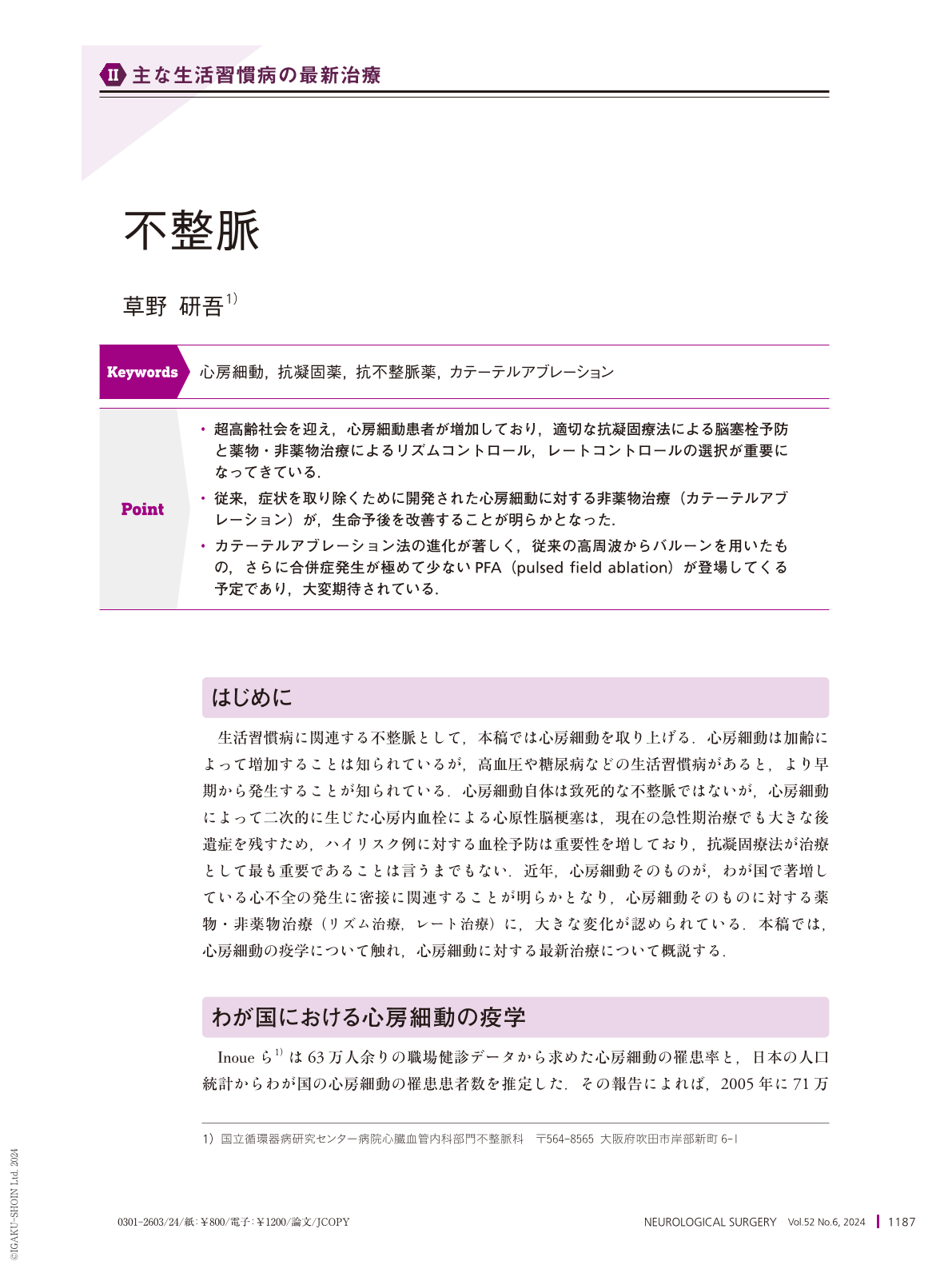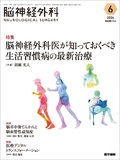Japanese
English
- 有料閲覧
- Abstract 文献概要
- 1ページ目 Look Inside
- 参考文献 Reference
Point
・超高齢社会を迎え,心房細動患者が増加しており,適切な抗凝固療法による脳塞栓予防と薬物・非薬物治療によるリズムコントロール,レートコントロールの選択が重要になってきている.
・従来,症状を取り除くために開発された心房細動に対する非薬物治療(カテーテルアブレーション)が,生命予後を改善することが明らかとなった.
・カテーテルアブレーション法の進化が著しく,従来の高周波からバルーンを用いたもの,さらに合併症発生が極めて少ないPFA(pulsed field ablation)が登場してくる予定であり,大変期待されている.
The basic principles of atrial fibrillation(AF)treatment are stroke prevention with appropriate anticoagulation, rhythm and rate control with drugs, and non-pharmacological therapy.
The current guidelines have been presented. Non-pharmacological treatment(catheter ablation)for AF, originally developed to eliminate motivational symptoms, has been shown to improve life outcomes, and indications for ablation are expanding rapidly.
Catheter ablation has evolved remarkably from conventional radiofrequency to balloon ablation. Minimal complications are expected to occur with pulsed-field ablation. Ablation strategies for paroxysmal AF are almost established and approaches for persistent AF are becoming increasingly important.
Surgical approaches have also evolved significantly, with robotic surgery, the thoracoscopic Wolf-Ohtsuka procedure, and minimally invasive cardiac surgery, becoming less invasive. Future studies should prioritize a system for better function and treatment options for the heart team.

Copyright © 2024, Igaku-Shoin Ltd. All rights reserved.


